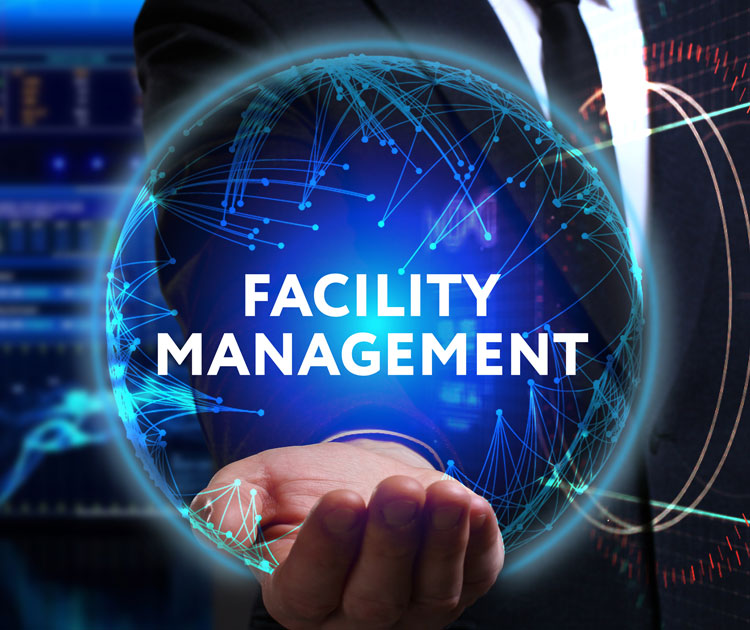Why Total Facility Management Is Crucial for Today’s Enterprises
Why Total Facility Management Is Crucial for Today’s Enterprises
Blog Article
Top Advantages of Total Facility Management for Streamlined Operations
Total Facility Management (TFM) represents a tactical strategy to boosting operational efficiency by incorporating numerous services, such as maintenance and safety, under a unified management framework. The question stays: what certain advantages can organizations harness from adopting TFM, and how might these benefits change their functional landscape?
Improved Operational Efficiency
Boosted functional performance is a key advantage of carrying out total facility management (TFM) techniques. TFM includes a detailed method to taking care of a center's resources, procedures, and infrastructure, inevitably simplifying operations. By consolidating various solutions-- such as upkeep, room, safety and security, and cleaning management-- TFM enhances and minimizes redundancies coordination among different operational functions.
The integration of modern technology further enhances this performance. Advanced facility management systems offer real-time data analytics, enabling facility managers to make informed choices that improve process and resource allocation. Predictive upkeep strategies, for example, expect devices failures prior to they occur, reducing downtime and prolonging asset life-span.
Furthermore, TFM advertises standard procedures across various departments, ensuring consistency and high quality in service delivery. This uniformity decreases functional interruptions and fosters a much more collective workplace. Consequently, workers can concentrate on their core responsibilities, driving productivity and improving overall performance.

Cost Decrease and Financial Savings
Carrying out total facility management (TFM) not just boosts operational performance but likewise considerably contributes to cost decrease and cost savings. By consolidating numerous solutions under a single management framework, organizations can get rid of redundancies and enhance processes, consequently reducing functional costs. TFM enables far better procurement strategies, allowing companies to work out bulk acquiring agreements with providers and provider, resulting in reduced costs.
In addition, TFM stresses precautionary maintenance, which lessens unforeseen breakdowns and expands the lifespan of critical tools. This positive approach not only decreases repair service costs yet also improves the integrity of facilitiess, making certain continuous operations. Furthermore, power efficiency initiatives, usually an essential emphasis of TFM, bring about significant financial savings on energy costs, as facilitiess are maximized for minimized power consumption.
Improved Source Management
Effective resource management is a keystone of total facility management (TFM), enabling organizations to enhance making use of their assets and labor force. By applying TFM approaches, companies can adequately examine their source allocation, guaranteeing that every asset is made use of successfully and successfully. This all natural approach enables for the recognition of underperforming resources and the potential for reallocation or improvement.
Furthermore, TFM promotes the assimilation of innovation for real-time tracking of sources, which aids in predicting upkeep requirements and preventing costly downtime. By leveraging data analytics, companies can make enlightened choices about source deployment, inevitably enhancing efficiency and lowering waste.
Moreover, TFM advertises a society of constant enhancement, urging teams to on a regular basis evaluate and fine-tune their resource management methods. Total Facility Management. This proactive stance not just reduces operational disturbances yet also cultivates innovation, as workers are empowered to recommend improvements based upon their firsthand experiences with resource usage
Streamlined Communication Channels
In total facility management, structured interaction channels play an essential function in fostering partnership and effectiveness throughout teams. Efficient communication ensures that all stakeholders, consisting of facility managers, upkeep personnel, and service providers, are straightened with organizational goals and functional demands. By establishing clear lines of communication, teams can quickly deal with worries, share updates, and execute solutions, therefore decreasing downtime and improving efficiency.
With systematized interaction systems, details is quickly available, permitting real-time updates on upkeep requests, source allowance, and job timelines. This transparency not just lowers misunderstandings yet likewise encourages staff members to make educated choices quickly. Moreover, structured communication promotes better sychronisation throughout emergencies, ensuring that all employees are educated and can react promptly.

Enhanced Focus on Core Activities
A crucial advantage of total facility management is the increased emphasis on core activities, enabling organizations to concentrate on their main organization objectives - Total Facility Management. By contracting out non-core functions such as upkeep, cleansing, and safety, companies can redirect their sources and power in the direction of strategic campaigns that directly add to their affordable benefit and growth
Total facility management incorporates numerous functional jobs under a solitary umbrella, promoting effectiveness and decreasing redundancy. This consolidation not only enhances processes however additionally enhances liability, ensuring that every element of the facility operates sympathetically without diverting interest from what really matters-- core organization features.
Additionally, this method makes it possible for additional hints staff members to commit their effort and time to jobs that drive development and improve customer contentment, as opposed to obtaining stalled by functional challenges. With a dependable facility management partner handling everyday operations, organizations can achieve better dexterity, react swiftly to market changes, and maintain a sharper concentrate on their objective.
Ultimately, raised see it here concentrate on core activities results in improved total performance, allowing companies to strengthen their market position and satisfy their calculated goals much more effectively. - Total Facility Management
Verdict
In final thought, Total Facility Management substantially improves functional performance by combining crucial services and leveraging data analytics for informed decision-making. Cost reductions and boosted source management contribute to general savings, while streamlined interaction channels foster cooperation amongst stakeholders.
Total Facility Management (TFM) represents a tactical technique to boosting operational effectiveness by integrating numerous services, such as maintenance and safety, under a unified management structure.Boosted functional efficiency is a key advantage of executing total facility management (TFM) techniques. Advanced facility management systems offer real-time data analytics, making it possible for facility supervisors to make educated decisions that boost operations and resource allocation.Applying total facility management (TFM) not just boosts functional effectiveness however also considerably contributes to set you back decrease and cost savings.Efficient source management is a cornerstone of total facility management (TFM), enabling companies to optimize the usage of their why not try these out properties and workforce.
Report this page